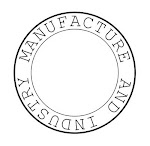
In the third part of our interview with Gary Bott we discuss the manufacturing process of Globe Trotter's luggage, the factory and its workforce, and the challenges of finding craftspeople in modern Britain.
On the Manufacturing Process
"This can’t be automated. That is quite an amazing thing. We feel we have a responsibility to protect the manufacturing side of the business. We have about 26 people working in the factory here, three of us in head office and two in the shop - that’s it for the world. We produce 200 suitcases a week, 10,000 a year. That’s it."
On the Difference Between Globe Trotter's Collections:
"Our Original series doesn’t have leather straps or leather corners, it has vulcanised straps and corners. There are five colour options. With Centenary (pictured above, Hermes edition) - it has leather straps and leather corners and is available in several colours. If we do a special or limited edition suitcases they are always centenary."
On the Joy of Longevity in a Product
"If you’re investing in a Globe Trotter case it will last you a lifetime. How many suitcases does a person need? Two, maybe three maximum. If your Globe Trotter suitcases last a lifetime you have no reason to come back to us. We’re not seasonal. We share this with the likes of Tricker’s and Brooks; once you’ve bought your Tricker’s boots or brogues you don’t tend to buy another pair. If you need to get them resoled you do so. They look better with age, as does a Globe Trotter suitcase or Brooks saddle."
On the Workforce
"We have a lady who has been with us for 40 years who stitches all the handles and straps (pictured below.) Two other ladies help her out. If we didn’t have Linda then we would be starting again. There are two guys who work on moudling the leather corners. The leather is cut into a disc shape, soaked, then pressed on a heavy duty Victorian machine, left to dry for 24 hours, pressed again, repeated. The process has to be started on a Monday. If it is only done four instead of five times it will not be as strong.
David, the factory manager, has been with the company since his teens. He’s only one of three people (the others being the quality assurance manager and production manager) who can do every single job in the factory. This is what our customers buy into."
On Finding Craftsmen
"Finding the person with the right attitude and ability is tough. Age is not so much a factor but in an ideal world you’d want a young apprentice that you could train up and would stay with a company for life. I think that culture isn’t here anymore. We’re of a generation that wants to do all sorts of things.
Geography is also a factor. Finding the right person in London is easier than finding the right person in Hertfordshire or Huddersfield for instance. Your options are limited. We can find someone locally though, most of the poeple who join Globe Trotter stay for a long time. We are always proactive in getting the factory involved, always sharing where the product ends up - whether it be Vogue, GQ or The Sunday Times Style. I think that’s great - when that factory worker is down the pub or meeting someone for the first time - they can say ‘yeah, I make those'."




 M&I found out about Seipel earlier this year; Gary Bott, creative director of Globe Trotter mentioned an old factory producing amazing leather goods. Hopefully a visit can be arranged in the near future, but for now, please enjoy these photographs that Mr Bott kindly sent our way.
M&I found out about Seipel earlier this year; Gary Bott, creative director of Globe Trotter mentioned an old factory producing amazing leather goods. Hopefully a visit can be arranged in the near future, but for now, please enjoy these photographs that Mr Bott kindly sent our way.














